Black is a tone not to be used lightly. Show up in head-to-toe black and you’re sure to be taken seriously. Paint your walls dark and people know design is your thing. Same goes for the garden. While black plants may seem to go against every natural grain, there’s nothing more elegant — and complementary. One, Autumn snakeroot, is a striking specimen plant that also elevates and highlights surrounding plants. It can recede to the background but retain just enough panache to add the perfect exclamation point to a planting plan.
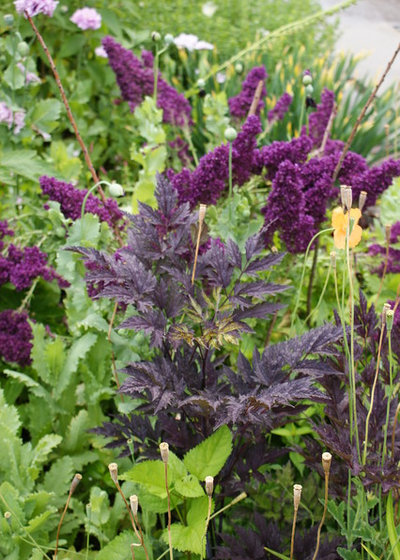
www.KarlGercens.com
Botanical name: Actaea simplex 'Hillside Black Beauty' (previously
Cimicifuga)
Common names: Bugbane, Autumn snakeroot, black cohosh, fairy candles
USDA zones: 3 to 9 (find your zone)
Water requirement: Regular; prefers moist, well-drained soil
Sun requirement: Light shade in hot climates
Mature size: 3 to 7 feet tall and 3 feet wide
Benefits and tolerances: Flowers attract birds, bees and butterflies; deer and rabbit resistant; salt and seaside tolerant
Seasonal interest: Attractive foliage; fragrant, showy flowers in late summer through fall
When to plant: Plant and divide it in spring.
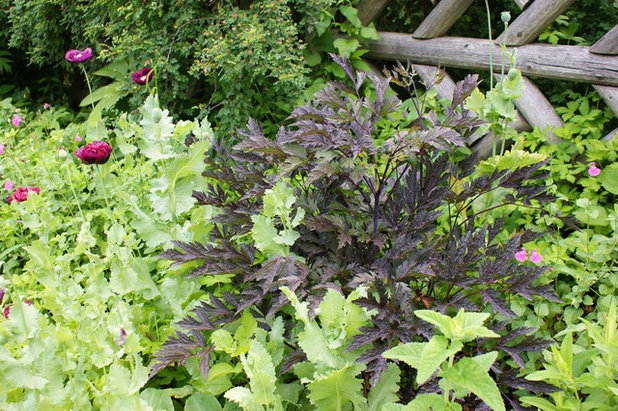
www.KarlGercens.com
Distinguishing traits. ‘Hillside Black Beauty’ is as dark as they come when it comes to snakeroots. Dark, almost black, magenta foliage is what grabs you first. The leaves are highly divided and create an airy, understory feel.
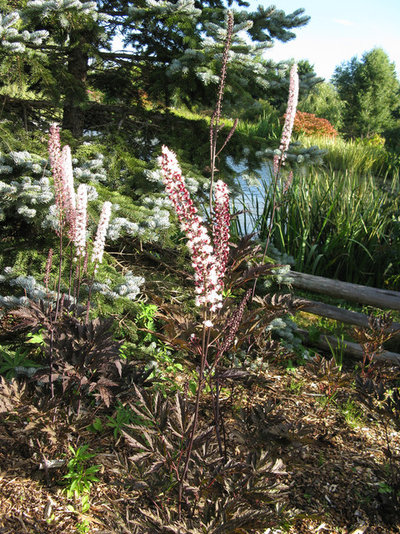
Kingsbrae Garden
While its foliage steals the show, don't discount its blooms. Early fall brings highly ornamental and fragrant pink flowers atop projecting stems. They top the foliage like soft, fluffy wands.
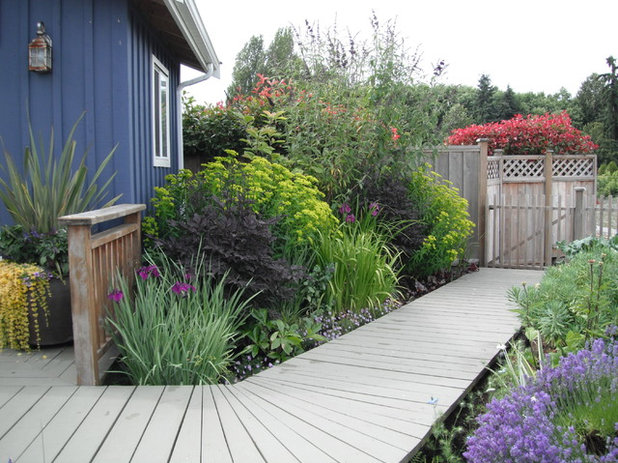
Glenna Partridge Garden Design
How to use it. This plant doesn’t require any preconceived garden use or design style, yet can make a strong, sophisticated and individual statement with it — it's the perfect Little Black Dress of plants. Its soft texture, form and preferred growing conditions make it a natural addition to any modern woodland garden, a nod to the "new perennials" movement.
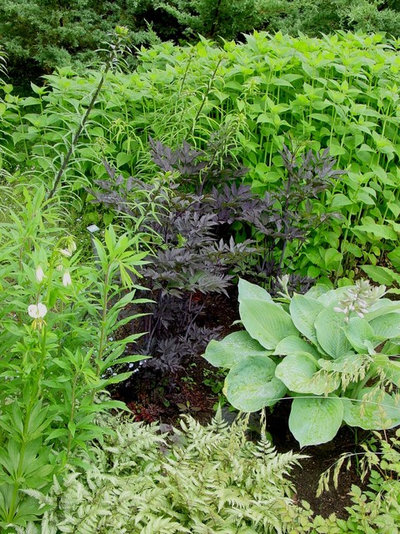
www.KarlGercens.com
It would, however, be foolish to disregard the color of this plant, because the color is what makes it so extraordinary. Pair it with lime-colored foliage for vivid contrast and color in a fall garden.
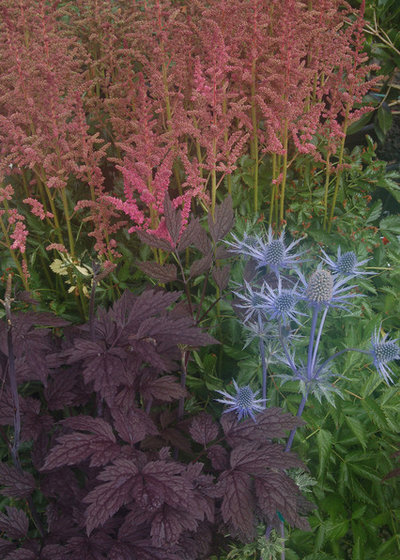
Julie
Alternatively, combine it with similarly cool-colored foliage for a soft and stunning tapestry. Here, ‘Hillside Black Beauty’, planted alongside Astilbe and Eryngium, evokes the colors of autumn.
Planting notes. ‘Hillside Black Beauty’ grows well in a woodland setting, so emulating those conditions will make growing this plant easier. Site it in partial shade and maintain consistent soil moisture. Grow it in well-drained soil that's rich in organic material. While this plant can tolerate full sun in milder climates, too much intense sunlight can scorch and burn the foliage. Look for flowers the second year.





